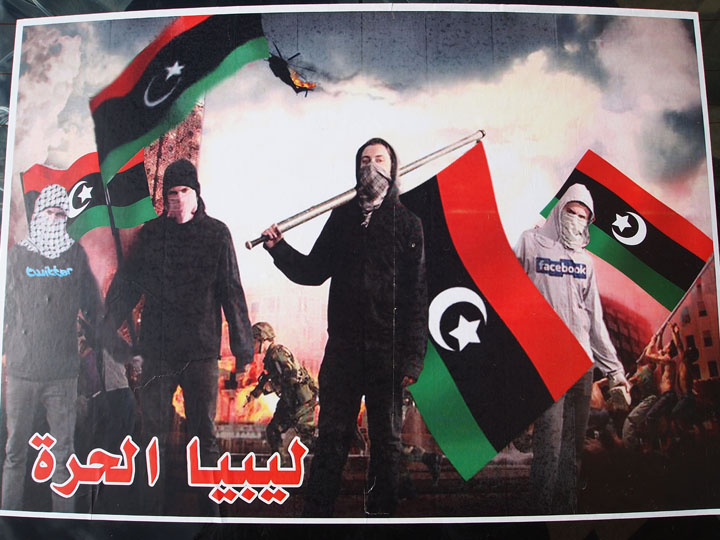Benghazi: A Historical and Cultural Portrait of Libya's Second City
Introduction to Benghazi
Benghazi, the second-largest city in Libya, holds a significant place in the nation's history, culture, and politics. Located on the northeastern coast of the country along the Mediterranean Sea, this ancient city has played a crucial role in Libya's development, serving as a bridge between Africa and the Mediterranean world. Known for its vibrant trade, unique architecture, and turbulent history, Benghazi remains a city of contrasts—balancing tradition with modernity, resilience with upheaval.
The Ancient Roots of Benghazi
Benghazi's origins date back to antiquity, when it was known as **Euesperides**, founded by Greek colonists in the 6th century BCE. Later, it was renamed **Berenice** in honor of the wife of Ptolemy III of Egypt during the Hellenistic period. Under Roman rule, the city became part of the flourishing North African coastal trade network.
Archaeological findings reveal that ancient Benghazi was a prosperous trading hub, dealing in olive oil, grain, and other commodities. The remnants of Greek and Roman architecture, though sparse today, hint at its former glory. Many artifacts from these periods are displayed in the **Jamahirriya Museum**, offering glimpses into the city's layered past.
Islamic and Ottoman Era
With the spread of Islam in the 7th century, Benghazi became an important Islamic center. The city's strategic location made it a key stop for trade caravans traveling across the Sahara. Under Ottoman rule (16th–19th centuries), Benghazi grew as a fortified city, with mosques, madrasas, and markets shaping its urban landscape. The Ottomans reinforced its defenses against European naval powers while maintaining trade links across the Mediterranean.
The **Atiq Mosque**, built in the Ottoman era, stands as a testament to this period. Its distinctive architectural style—featuring domes, arches, and minarets—reflects the fusion of Islamic and Ottoman influences.
Italian Colonization and Modernization
The early 20th century brought dramatic changes under Italian colonial rule (1911–1943). The Italians sought to transform Benghazi into a modern city, constructing wide boulevards, public buildings, and residential quarters reminiscent of European urban planning. However, this modernization came at a cost—Libyans faced harsh oppression, resistance movements were violently suppressed, and traditional neighborhoods were often demolished.
Despite this, some architectural landmarks from this era remain, such as the **Benghazi Cathedral**, a grandiose example of Italianate design now repurposed as a mosque. The colonial period also introduced new infrastructure, including roads, railways, and ports, which laid the groundwork for Libya’s later development.
World War II and Independence
Benghazi became a critical battleground during World War II, witnessing intense fighting between Axis and Allied forces. The city changed hands multiple times, suffering extensive destruction. The war's end marked a turning point—Libya transitioned from colonial rule to independence in 1951 under King Idris I, with Benghazi serving as a co-capital alongside Tripoli.
During Idris's monarchy, Benghazi saw economic growth fueled by oil discoveries in the 1950s. However, political dissatisfaction grew, culminating in Colonel Muammar Gaddafi's 1969 coup, which overthrew the monarchy and initiated a new era—one that would deeply shape Benghazi’s identity.
Gaddafi’s Era and Political Tensions
Under Gaddafi’s rule (1969–2011), Benghazi became a focal point of opposition. Though Libya’s wealth expanded due to oil revenues, distribution was uneven, with Tripoli receiving preferential treatment. This neglect bred resentment in Benghazi, fostering a sense of marginalization. Despite this, the city remained Libya’s cultural and intellectual heart, home to the country’s first university—**University of Libya (now University of Benghazi)**—and a thriving arts scene.
By the early 2000s, dissent against Gaddafi’s regime intensified, particularly among Benghazi’s influential tribal leaders and intellectuals. This discontent would later erupt during the **2011 Arab Spring**, when Benghazi became the cradle of Libya’s revolution.
The 2011 Revolution and Aftermath
Benghazi was the birthplace of the uprising against Gaddafi on **February 17, 2011**, a date now commemorated as Libya’s Revolution Day. Protesters demanding democracy and justice clashed with regime forces, leading to a brutal crackdown. The city quickly became a stronghold for revolutionary fighters, aided by NATO airstrikes.
Gaddafi’s fall later that year marked a new beginning—but also instability. Benghazi found itself at the center of post-revolution conflicts, including militia rivalries and the rise of extremist factions. The tragic **2012 attack on the U.S. Consulate**, which killed Ambassador Christopher Stevens and three others, brought Benghazi into international headlines, symbolizing the chaos of post-Gaddafi Libya.
Present-Day Benghazi: Challenges and Resilience
Today, Benghazi is recovering from years of conflict. Infrastructure remains damaged, and political divisions persist. Yet, the city’s enduring spirit is evident in its bustling markets, vibrant youth culture, and efforts to rebuild. Universities continue to produce Libya’s future leaders, while civil society groups work toward reconciliation.
Benghazi’s rich history, from ancient empires to revolutionary fervor, makes it a microcosm of Libya itself—a land of contrasts, enduring hardships, and striving for renewal.
(To be continued...)
Benghazi’s Cultural and Social Fabric
Benghazi has long been recognized as a cultural melting pot, shaped by centuries of trade, migration, and conquest. Unlike Tripoli, which has a more homogenized identity influenced by Ottoman and Italian rule, Benghazi retains a distinct character—more open to external influences yet deeply rooted in its Arab and Amazigh (Berber) heritage. This blend is evident in the city’s dialects, cuisine, and traditions.
One of the most notable cultural aspects of Benghazi is its literary and intellectual legacy. The city has produced renowned poets, scholars, and writers who have contributed significantly to Arabic literature. The annual **Benghazi Book Fair**, though interrupted by conflict in recent years, was once a major event showcasing Libyan and international literature. Efforts are underway to revive such cultural gatherings as a way to heal and reunify the community.
Architecture: A Blend of Eras
Walking through Benghazi’s streets is like traversing different centuries. The **Old City (Al-Baladiya Al-Qadima)** features Ottoman-era houses with intricate wooden balconies and arched doorways, though many have suffered neglect or war damage. Nearby stand Italian colonial buildings with their neoclassical facades and grand public squares, such as **Independence Square (Maidan al-Shajara)**, which remains a central gathering spot.
In contrast, modern Benghazi is marked by utilitarian apartment blocks and commercial districts constructed in the post-independence oil boom. Some architectural gems, like the **Benghazi Lighthouse** along the corniche, serve as nostalgic landmarks of a once-thriving port city. Recent reconstruction projects aim to restore historical sites, but funding and political instability have slowed progress.
The Role of Trade and Commerce
As Libya’s primary eastern trade hub, Benghazi’s economy has traditionally relied on its port, **Benghazi Port**, which connects Libya to Egypt, the Levant, and Europe. Before the 2011 revolution, the city was a commercial powerhouse, exporting petroleum, agricultural products, and textiles. The port suffered severe damage during clashes but has seen gradual reactivation in recent years.
The **Suq al-Jareed**, one of the oldest open-air markets in Libya, is a bustling center for spices, traditional garments, and handcrafted goods. Despite economic hardships, small businesses and informal trade networks persist, serving as the lifeblood for many families. The informal sector thrives—street vendors, repair shops, and mobile markets fill gaps left by a fractured formal economy.
Education and Intellectual Life
Benghazi takes pride in being the birthplace of modern Libyan education. The **University of Benghazi**, founded in 1955 as the University of Libya, was the country’s first major higher education institution. Its alumni include prominent scientists, writers, and politicians. However, the university—like much of the city—has faced severe challenges, from bombings during the revolution to ongoing budget shortages.
Student activism has historically been strong in Benghazi, with youth playing pivotal roles in protests against Gaddafi’s regime and later advocating for democratic reforms. Today, young Libyans in Benghazi remain politically engaged, though frustration over unemployment and lack of opportunities fuels both hope and disillusionment.
Religion and Society
Islam is deeply woven into Benghazi’s identity, with a majority of residents adhering to Sunni Islam. The city has a reputation for religious conservatism compared to Tripoli, though it also embraces Sufi traditions. Mosques like the **Ghamma Mosque** and **Atiq Mosque** serve as both spiritual centers and community hubs.
Yet Benghazi is not monolithic—its residents include Amazigh minorities, sub-Saharan African migrants, and small Christian communities. During Gaddafi’s rule, religious expression was tightly controlled, but post-2011 saw a resurgence of public piety as well as extremist elements. In recent years, an emphasis on moderate Islam has regained prominence, particularly among youth weary of ideological strife.
Sports and Popular Culture
Football (soccer) is a passion in Benghazi, with **Al-Ahly Benghazi** and **Al-Nasr** serving as the city’s most beloved teams. Matches at the **March 28 Stadium** draw fervent crowds, though security concerns sometimes limit large gatherings. Beyond sports, Benghazi has a thriving underground music scene, where young artists blend traditional Libyan sounds with hip-hop, rock, and electronic music.
Cinema and theater, once flourishing in the mid-20th century, are slowly re-emerging. The **Benghazi Film Festival**, paused due to conflict, symbolizes hopes for cultural revival. Social media has also become an outlet for creative expression, with local comedians, filmmakers, and writers gaining followings online.
Humanitarian Challenges
Years of conflict have left deep scars. Thousands of Benghazi residents remain internally displaced, and infrastructure—electricity, clean water, healthcare—is often unreliable. Hospitals like **Benghazi Medical Center** operate under strain, with shortages of supplies and trained staff. Mine clearance efforts continue in former battle zones to prevent civilian casualties.
International aid agencies work alongside local NGOs, but bureaucracy and distrust hamper progress. Unemployment, particularly among youth, fuels frustration, pushing some toward migration or radicalization. Yet, grassroots initiatives—such as women’s cooperatives and youth volunteer groups—demonstrate resilience.
Looking Ahead: Rebuilding and Reconciliation
Benghazi stands at a crossroads. Reconstruction is underway in some districts, with new roads and restored buildings signaling slow recovery. However, political divisions between eastern and western Libya complicate long-term stability. The city’s future depends on national reconciliation, economic diversification beyond oil, and investment in its greatest resource—its people.
Historically, Benghazi has risen from ruins before. If peace holds, this city of poets, traders, and revolutionaries may yet reclaim its place as Libya’s cultural and economic beacon.
(To be continued...)
Benghazi: A City Reclaiming Its Future
At the heart of Libya's tumultuous modern history, Benghazi has been a symbol of resistance, resilience, and reinvention. Now in the aftermath of war and political upheaval, the city faces both immense challenges and glimmers of opportunity. The final chapter of Benghazi’s story—at least for now—is one of cautious reconstruction, shifting identities, and an uncertain but determined path forward.
The Eastern Stronghold: Benghazi in Post-Gaddafi Libya
Following the overthrow of Gaddafi, Benghazi emerged as the de facto capital of Libya's eastern region. The rise of Khalifa Haftar and the Libyan National Army (LNA) cemented the city’s role as a military and political counterweight to Tripoli. Supporters view Haftar as a stabilizing force, while critics accuse him of authoritarian tendencies.
This divide reflects broader tensions between Libya’s east and west, where competing governments vie for legitimacy. Benghazi remains firmly aligned with eastern factions, hosting the Libyan House of Representatives (HoR), though its authority is disputed internationally. Political fragmentation has hindered national recovery, leaving Benghazi to rely heavily on regional alliances with Egypt, the UAE, and Russia for economic and military support.
The Reality of Rebuilding
Physical reconstruction in Benghazi is underway but uneven. Entire neighborhoods, like the battle-scarred districts of **Sidi Faraj** and **al-Sabri**, lie partially in ruins. The Central Business District, once a thriving commercial hub, remains a shell of its former self. Government-funded projects, such as road repairs and electrical grid upgrades, have faced delays due to corruption and mismanagement.
Yet, local businesses and residents are taking matters into their own hands. Private investment is slowly reviving once-abandoned markets, cafes, and workshops. The corniche, a popular waterfront promenade, has been partially rehabilitated, offering families a rare public space for leisure. Meanwhile, Benghazi’s port—critical for Libya’s trade—has seen incremental improvements, though full restoration may take years.
The Human Toll: Displacement and Trauma
The human cost of Benghazi’s conflicts lingers. Thousands of families displaced during the 2014–2017 battles have yet to return, their homes destroyed or occupied. Land disputes, revenge killings, and tribal tensions complicate reintegration efforts. Many who stayed face psychological trauma from urban warfare—shelling, sniper fire, and forced disappearances left deep scars.
Local NGOs provide counseling and vocational training, but resources are stretched thin. Women, in particular, have stepped into leadership roles in reconciliation efforts, advocating for peaceful coexistence between rival communities. Figures like human rights lawyer **Hanan al-Barassi**, whose 2020 assassination shocked the city, highlight both the risks and resilience of activism in post-war Benghazi.
Economic Survival in an Unstable Landscape
Benghazi's economy, once driven by oil and trade, now operates in survival mode. Government salaries go unpaid for months, pushing many into informal jobs—street vending, smuggling, or day labor. The black market thrives, offering everything from fuel to pharmaceuticals. Meanwhile, foreign currency shortages and inflation make basic goods unaffordable for some.
But small victories emerge. Tech-savvy youth launch startups in e-commerce and mobile services, circumventing traditional barriers. The **Benghazi Chamber of Commerce** promotes local manufacturing, hoping to reduce dependence on imports. And despite risks, international firms cautiously explore energy and construction contracts, betting on stabilization.
The Shadow of Extremism
Benghazi’s association with armed groups remains part of its complicated legacy. Early in the revolution, Islamist factions, including Ansar al-Sharia, held sway. Their eventual defeat by Haftar’s forces in 2017 was celebrated by many residents tired of militias—but critics warn that repression replaced extremism with militarization.
Sporadic attacks still occur, a reminder of lingering unrest. Authorities maintain tight security, with checkpoints and surveillance common. While extremist recruitment has dwindled, radical ideologies persist in marginalized communities, requiring more than military solutions to erase.
A Cultural Awakening
Amid hardship, Benghazi’s cultural revival offers hope. Artists, musicians, and writers who fled during the worst violence are gradually returning. Underground galleries, poetry readings, and music festivals crop up, defying conservative norms. The **Libyan Youth Theater**, destroyed in 2014, has reopened with performances addressing war and reconciliation.
Young filmmakers document Benghazi’s untold stories, sharing them through social media. Platforms like **Tanarot**, a local streaming service, give voice to independent creators. Even graffiti—once just revolutionary slogans—now includes murals celebrating Libyan heritage.
The Promise of Education
Schools and universities are lifelines for the next generation. Despite damaged facilities, enrollment at the **University of Benghazi** is rising. Medical students train in under-equipped hospitals, engineers rebuild labs, and law graduates join NGOs advocating for justice.
International exchange programs, though limited, have resumed, reconnecting Libyan students with global academia. A new push for STEM education aims to prepare youth for a post-oil economy, emphasizing technology and sustainability.
Benghazi’s Place in a Divided Libya
As Libya’s political crisis drags on, Benghazi’s role remains contentious. Some push for federalism, granting the east greater autonomy. Others fear this could fracture the country further. Elections, repeatedly delayed, are seen as the only exit—but agreeing on terms proves elusive.
Meanwhile, Benghazi residents increasingly identify as “eastern Libyans,” distinct from Tripolitania. This regional pride, while fostering local unity, risks deepening national divisions.
Conclusion: A City of Contradictions and Courage
Benghazi defies simple narratives. It is a city of poets and warriors, of bullet-riddled buildings and bustling tea shops. Its people endure power cuts with humor, navigate checkpoints with patience, and debate politics with passion.
The road ahead is uncertain. Reconstruction is slow, justice is incomplete, and peace is fragile. Yet Benghazi, as it has for millennia, adapts. From Greek colony to Ottoman outpost, from revolutionary epicenter to postwar enigma, the city reinvents itself again and again.
Its ultimate fate is tied to Libya’s—but if history is any guide, Benghazi will help shape that future, not just endure it. As one local activist put it: *"We buried our dead, not our dreams."* For Benghazi, the story continues.















Comments